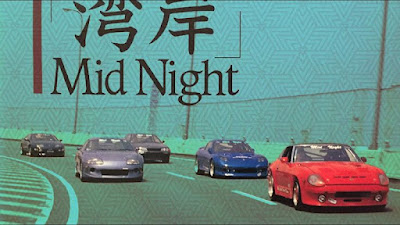THE JAPANESE GENTLEMAN'S AGREEMENT
Long time no blog! How are my Turbonerdz doing? For real, how are you doing? Nigeria has been making us go through a lot, so I can only hope that we are all coping well. Anyhoo, I have really missed you guys. I would love to say I am back, but that is not the case. Nonetheless, I will be popping up on your radar from time to time. Let us begin with an exercise, I want you to type the following on your google search;
1. "how much horsepower does the Nissan R34 GT-R make?"
2. "how much horsepower does the Mitsubishi Lancer Evo IV make?"
3. "how much horsepower does the Nissan Fairlady Z make?"
If you did the google searches as instructed, you would have discovered that all three cars have similar horsepower (hp) figures, with 276 horsepower (+/- 5 horsepower). There are countless other Japanese sport cars that have similar horsepower ratings, all produced around the same time as the three highlighted above. Now, let me ask you a question. Can five different people make 'eba' with the same exact quantity and consistency? Your answer is probably 'no' and you would be on point. Therefore, having so many Japanese sport cars with very similar horsepower figures sounds suspicious. Time to investigate (putting on my Sherlock trench coat)
We all remember the Mid Night Club right? For some of us, it was just a PlayStation 2 game we played back in the day. The crazy thing about it all, is that the original game was loosely based on true events that happened in Japan. Basically, the mid night club was founded in 1987 and comprised a group of Japanese executives who were normal office workers during the day, but became high speed racers at night. They had crazy customised vehicles that literally flew through the streets of Tokyo. I know this is a different story and it seems like I am veering off course, but trust me, it all adds up.
The mid night club might have been street racers, but they had strong code of ethics to prevent any members of the club endangering a member of the public or any other members of the club. Despite the rules and code of ethics, sources say that there was a major accident which led to loss of lives and it was as a result of a midnight club race. This singular event led to the disbanding of the club, even though some sources say that they still operated quietly after. The essence of telling you about midnight club, is to let you understand how they encouraged a frenzy for fast customised vehicles, as well as street racing.
Mid Night Club brought about a rise of street racing in Japan, with the result being a proportional increase in the number of ghastly accidents in Japan. Lest we forget that Japan has always made the best sport cars, which had crazy horsepower numbers from factory. The government eventually began putting blame on the automotive companies for producing cars that were too fast. This in fact was true, but you do not blame the producers of a commodity for how the users choose to make use the product, right? The Japanese automotive companies however took it upon themselves to do something about the rising situation in Japan and thus, the gentleman's agreement was made. What exactly was this agreement?
In 1989, the Japan Automobile Manufacturers Association (JAMA) made a strict rule which limited production vehicles to 276 horsepower (hp) and 112 miles per hour. This meant that no car should exceed these set limits. Do not forget that these car companies already had vehicle engines making way more than 276 hp. In order to keep with this new rule, they would have to make new engines that could only make 276 hp or limit their already produced engines by tweaking them to not exceed 276 hp. History shows us that they went for the latter option as it was cheaper and easier to do.
As a result of this, most Japanese sport cars made from 1980 had horsepower limiters and their published horsepower figures all fell either at exactly 276hp or close to it. This in turn created a loop hole in the system, as people eventually realised the cheat code. This meant that one had to just remove the horsepower limiter and they would have access to the full power of these vehicles, which in reality by far exceeded 300 hp. More so, with the addition of a turbo charger or supercharger, these vehicles made almost twice their original horsepower figures. In a way, we can say that the Japanese gentleman's agreement popularised the car tuning culture which is still very much in vogue until today.
This brings us to the end of today’s blog post and I hope you enjoyed it. Until next time, I remain your friendly neighbourhood car guy. Have a wonderful weekend and always remember to Turbo that engine!










Comments